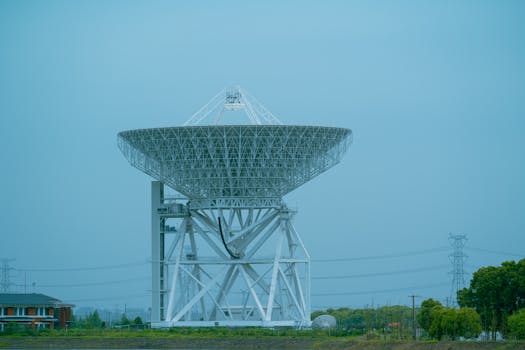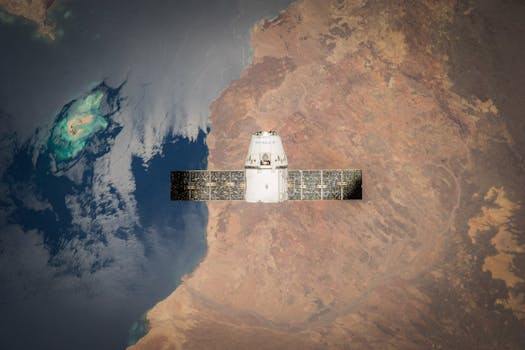Orbiting Innovations: Key Updates in Satellite Telecommunications Technology

Orbiting Innovations: Key Updates in Satellite Telecommunications Technology
Orbiting Innovations: Key Updates in Satellite Telecommunications Technology is a rapidly evolving field that has seen significant advancements in recent years. The satellite telecommunications industry is experiencing a surge in innovation, with new technologies and services being developed to meet the growing demand for global connectivity. In this article, we will explore the key updates in satellite telecommunications technology and their impact on the industry.
Satellite telecommunications technology has come a long way since its inception, with significant improvements in satellite design, launch technology, and telecommunications systems. The development of new satellite constellations, such as OneWeb and Starlink, has enabled the provision of high-speed, low-latency internet services to remote and underserved communities. These constellations are composed of hundreds of small satellites that work together to provide global coverage, and they have the potential to revolutionize the way we communicate and access information.
Advances in Satellite Technology

One of the key updates in satellite telecommunications technology is the development of new satellite designs and materials. Modern satellites are built with advanced materials and technologies that enable them to operate more efficiently and effectively. For example, the use of solar electric propulsion systems has improved the fuel efficiency of satellites, allowing them to operate for longer periods of time and reducing the need for costly and complex fueling missions. Additionally, the development of new antenna technologies has enabled satellites to transmit and receive data more efficiently, improving the overall performance of satellite telecommunications systems.
Another significant advancement in satellite technology is the development of small satellites, also known as smallsats. Smallsats are smaller and less expensive than traditional satellites, making them more accessible to a wider range of organizations and individuals. They are also more agile and can be launched into orbit more quickly, reducing the time and cost associated with traditional satellite launches. Smallsats have a wide range of applications, including Earth observation, communications, and scientific research, and they are expected to play a major role in the future of satellite telecommunications.
Telecommunications Technology Updates

In addition to advances in satellite technology, there have also been significant updates in telecommunications technology. The development of new telecommunications systems, such as 5G and 6G, has enabled faster and more reliable data transmission, improving the overall performance of satellite telecommunications systems. These systems use advanced technologies, such as beamforming and massive MIMO, to improve the capacity and efficiency of satellite communications. Additionally, the development of new telecommunications protocols, such as quantum cryptography, has improved the security and integrity of satellite communications, making them more suitable for sensitive and high-stakes applications.
The use of artificial intelligence (AI) and machine learning (ML) is also becoming more prevalent in satellite telecommunications. AI and ML can be used to improve the performance and efficiency of satellite communications, by optimizing data transmission and reception, and by predicting and mitigating interference and other types of signal degradation. AI and ML can also be used to improve the security and integrity of satellite communications, by detecting and responding to cyber threats and other types of malicious activity.
Impact on the Industry

The key updates in satellite telecommunications technology are having a significant impact on the industry. The development of new satellite constellations and advancements in satellite technology are enabling the provision of high-speed, low-latency internet services to remote and underserved communities. This is improving access to information and communication, and it is having a major impact on the way we live and work. The use of satellite telecommunications is also enabling new applications and services, such as precision agriculture, remote healthcare, and autonomous vehicles, and it is expected to play a major role in the development of the Internet of Things (IoT).
The updates in satellite telecommunications technology are also creating new opportunities for businesses and organizations. The development of new satellite constellations and advancements in satellite technology are enabling the provision of new services and applications, and they are creating new opportunities for revenue growth and job creation. The use of satellite telecommunications is also enabling businesses and organizations to operate more efficiently and effectively, by improving access to information and communication, and by enabling new applications and services.
In conclusion, the key updates in satellite telecommunications technology are having a significant impact on the industry. The development of new satellite constellations and advancements in satellite technology are enabling the provision of high-speed, low-latency internet services to remote and underserved communities. The use of satellite telecommunications is also enabling new applications and services, and it is creating new opportunities for businesses and organizations. As the industry continues to evolve, we can expect to see even more innovative technologies and services being developed, and we can expect satellite telecommunications to play an increasingly important role in the way we live and work.
See more:






